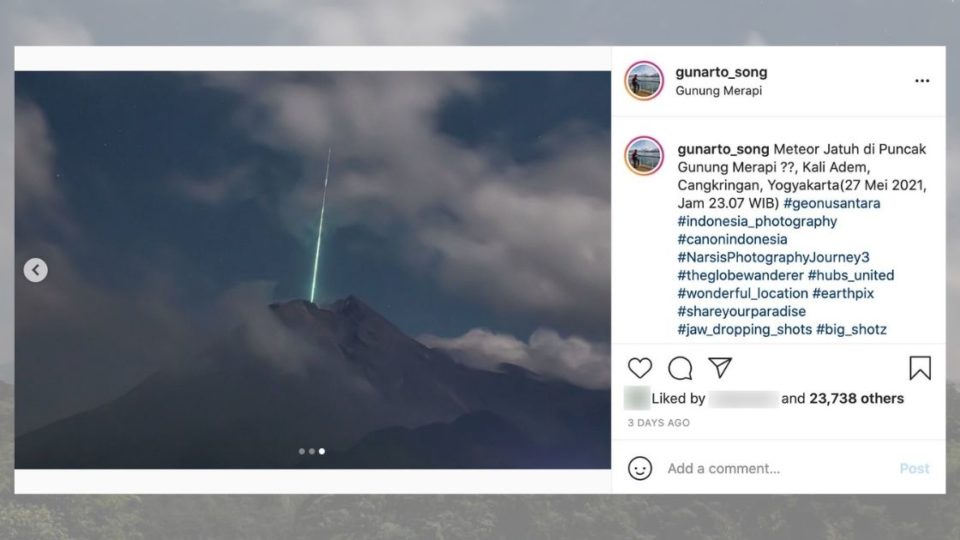A photo that shows a flash of green light resembling something like a comet above the peak of Central Java’s Mount Merapi was indeed from a meteor shower, authorities have confirmed.
The photo, which gained traction on social media over the weekend, was taken by a photographer named Gunarto, who shared three photos of the stunning phenomenon on his Instagram account @gunarto_song.
View this post on Instagram
“Meteor fell into the peak of Mount Merapi?” the caption reads.
The post has received more than 23,700 likes at the time of writing since it was uploaded on Saturday. Gunarto said that he initially wanted to capture the nighttime scenery of Mount Merapi from a site named Batu Alien (Alien Rock), a place where a large rock from the top of the volcano landed after a blast. Mount Merapi, which is Indonesia’s most active volcano, is located on the border of Magelang and Sleman regencies.
Gunarto said he was fixated on some clouds that suddenly appeared at the peak, when the light came down from the sky for only a couple of seconds. Thankfully, Gunarto and his camera were ready to capture the moment, later confirming that the gorgeous photos weren’t edited.
What appeared like a beaming light, however, is the result of a long exposure shooting technique, wherein Gunarto set the shutter speed at four seconds, resulting in the elongated light above Merapi as seen in the viral photos.
“I set the shutter speed at four seconds, which made the photos [of the light] appear long. But the light was round-shaped, it was so fast but it was indeed a round light that fell,” Gunarto said.
“Above the mountain were clouds, there was an ambience from the falling light which was greenish. If it was really far from, for example Merapi, why was the ambience there above the clouds?”
Gunarto also claimed that he didn’t hear any crashing sound when the green light “hit” the volcano.
The National Institute of Aeronautics and Space (LAPAN) suspected that what was captured by Gunarto was from a meteor shower. The institute said there have been two active meteor showers this month, namely the Eta Aquarids (April 19 – May 28) and the Arietids (May 14 – June 24).
Meteors can appear in various colors when the viewing conditions are clear or when they’re captured in photographs — while the color of light is determined by the chemical composition produced when they burn up upon entering the atmosphere. LAPAN said that the green color this time around was the result of the magnesium content in the meteors.
Also Read — Indonesian man ‘disappointed’ that he sold meteorite worth IDR26 billion for IDR200 million




